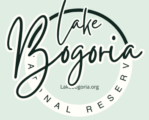Lake Bogoria National Park is one of Kenya’s most exceptional birdwatching destinations. From its massive flamingo flocks to elusive dryland species, the park offers a thrilling experience for both casual birders and seasoned ornithologists. Here’s everything you need to know for a rewarding birdwatching adventure in this Great Rift Valley gem.
✅ Complete Bird Checklist for Lake Bogoria
With over 300 recorded bird species, Lake Bogoria is officially recognized as an Important Bird Area (IBA). The lake and its surrounding habitats support a wide variety of birds, from wetland specialists to arid savannah dwellers.
Top species to watch for:
Waterbirds & Wetland Species:
- Lesser Flamingo (Phoeniconaias minor)
- Greater Flamingo (Phoenicopterus roseus)
- Great White Pelican
- Egyptian Goose
- Black-winged Stilt
- Little Grebe
Raptors:
- Martial Eagle
- African Fish Eagle
- Gabar Goshawk
- Augur Buzzard
- Lanner Falcon
Savannah & Woodland Birds:
- White-browed Sparrow-Weaver
- Superb Starling
- Lilac-breasted Roller
- Abyssinian Scimitarbill
- African Grey Hornbill
Dry-country Specials:
- Jackson’s Hornbill
- Heuglin’s Courser
- Spotted Thick-knee
- Somali Ostrich (occasionally seen)
Migratory Species:
During the northern winter, migratory birds such as Eurasian Bee-eaters, Yellow Wagtails, and European Rollers pass through the park.
📋 Pro Tip: Download a bird checklist app (e.g., eBird or Merlin) or bring a field guide for East African birds.
📍 Book Your Birding Tour at Lake Bogoria
Want to go beyond flamingos? Book a specialized birding tour with a local guide who understands the park’s birdlife and habitats.
What to expect from a birding tour:
- Early morning starts (best birding time)
- High-quality binoculars (if you don’t have your own)
- Access to key birding hotspots: southern shoreline, hot springs zone, acacia woodland, and open savannah
- Insights on species identification, behavior, and habitat ecology
- Optional combo tours with Lake Baringo for maximum diversity
Booking options:
- Through local lodges (like Lake Bogoria Spa Resort)
- Independent birding tour operators in Nairobi or Nakuru
- Community-based eco-guides (often Endorois locals)
🎯 Best For: Serious birders, wildlife photographers, and nature lovers seeking an in-depth experience.
🦉 Rare Birds You Can Spot at Lake Bogoria
Lake Bogoria’s varied habitats make it one of the best places to find rare and regionally significant bird species, particularly those adapted to saline waters or arid environments.
Rare or notable sightings include:
- Heuglin’s Courser – a nocturnal ground bird hard to spot elsewhere
- Verreaux’s Eagle – often seen soaring along cliffs
- Greater Painted-Snipe – shy wetland dweller
- Three-banded Courser
- Nubian Woodpecker – found in dry acacia bush
- Temminck’s Courser – found in drier scrub plains
🧠 Birding Tip: Be patient and quiet. Some of these species require a keen eye and a bit of luck!
🛡️ Protecting Birds at Lake Bogoria National Park
Lake Bogoria is critical for migratory and resident bird species, especially flamingos. Conservation is key to ensuring this ecosystem continues to thrive.
Conservation Highlights:
- Lake Bogoria is part of the Kenya Lake System UNESCO World Heritage Site, recognized for its role in supporting flamingos and biodiversity.
- The park is monitored by Kenya Wildlife Service (KWS) and local conservation groups.
- Community conservation efforts—especially by the Endorois people—support habitat protection and eco-tourism.
- Environmental challenges include fluctuating water levels, pollution in other Rift Valley lakes, and human encroachment.
🌍 How You Can Help:
- Support eco-lodges and community tourism
- Avoid disturbing birds, especially during nesting or breeding
- Donate or volunteer with local conservation groups
📅 When to Go Bird Watching at Lake Bogoria
Birdwatching is good year-round, but some months offer more spectacular sightings:
- Best months:
August to October – Flamingos are at their peak, and migratory birds begin to arrive
January to March – Fewer tourists, clear skies, and active breeding season for many species - Avoid:
April and November – Rainy seasons may hinder access due to muddy roads
🕐 Best time of day:
Early morning (6:00 AM – 9:00 AM) and late afternoon (4:30 PM – 6:30 PM) are ideal for active birdlife and great photography light.
🎒 Essential Bird Watching Gear for Lake Bogoria
To make the most of your birding adventure, pack the right tools:
Must-Have Gear:
- Binoculars (8×42 or 10×42) – for clear, stable views of distant birds
- Bird field guide – either a printed book or a birding app
- Notebook or birding journal – for logging your sightings
- Camera with zoom lens (300mm+) – for bird photography
- Hat, sunscreen, and lightweight long sleeves – for sun protection
- Insect repellent – especially during early morning walks
Optional Extras:
- Spotting scope with tripod (for shorebirds)
- Audio recorder (for bird calls)
- Portable stool or mat for patient watchers
🛒 Shopping Tip: Get your gear in Nairobi or Nakuru before arriving at the park—options near Lake Bogoria are limited.
Final Thoughts
Birdwatching at Lake Bogoria National Park is a rewarding, immersive experience. From flamingo-filled shores to acacia-dwelling songbirds, the diversity and density of species is unmatched in the region. Whether you’re on a full-scale birding expedition or a casual nature walk, this park offers unforgettable avian encounters.
📍Plan ahead, pack right, and bring your binoculars—Lake Bogoria is a birder’s paradise waiting to be explored.
